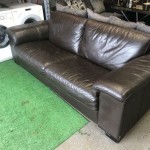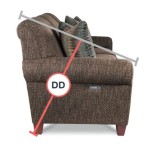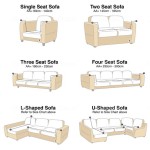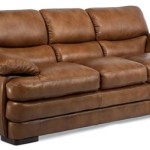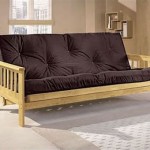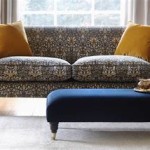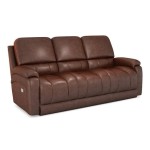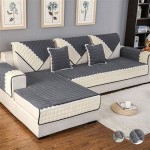Polyurethane Sofa Durability
Polyurethane (PU) is a widely used material in sofa construction, offering a versatile and cost-effective alternative to traditional materials like leather or down. Understanding its durability is crucial for consumers looking to invest in furniture that can withstand regular use and maintain its appearance over time.
Several factors contribute to the overall durability of a polyurethane sofa. These include the type of PU used, the manufacturing process, and the sofa's overall construction. Different types of PU offer varying levels of resilience, tear resistance, and support. High-resiliency (HR) foam, for instance, is known for its superior durability and ability to retain its shape, making it a popular choice for sofa cushions.
The manufacturing process also plays a significant role in determining the lifespan of a PU sofa. Careful construction and quality control measures ensure that the foam is properly adhered to the frame and that seams are reinforced to prevent tearing or separation. The density of the foam is another crucial factor. Higher-density foams generally offer greater durability and longevity compared to lower-density options, which can compress and lose their shape more readily.
Beyond the PU foam itself, the sofa's frame construction is critical to its overall durability. A robust frame, typically made of hardwood or engineered wood, provides a stable foundation for the cushions and prevents sagging or structural damage over time. The quality of the frame joinery also contributes to the sofa's ability to withstand daily use and resist wear and tear.
Understanding the different types of PU used in sofa construction can help consumers make informed decisions. Conventional PU foam is a standard option, offering a balance of comfort and affordability. However, it may not be as resilient as other types of PU and might be prone to compression over time. HR foam, as mentioned earlier, provides enhanced durability and support, making it suitable for high-traffic areas. Viscoelastic foam, also known as memory foam, conforms to the body's shape and provides pressure relief, but its durability can vary depending on the specific formulation.
Assessing the quality of a PU sofa involves examining several aspects. Checking the density of the foam is essential, as higher density typically indicates greater durability. Inspecting the seams and stitching ensures that the sofa is well-constructed and can withstand regular use. The sofa's frame construction should also be evaluated for stability and robustness. A sturdy frame will contribute significantly to the sofa's overall lifespan.
Maintaining a PU sofa properly can significantly extend its lifespan. Regular cleaning, following the manufacturer's recommendations, helps prevent the buildup of dirt and grime that can degrade the material over time. Protecting the sofa from direct sunlight can prevent fading and discoloration. Rotating and flipping cushions regularly, if applicable, helps distribute wear evenly and prevent excessive compression in specific areas.
The expected lifespan of a PU sofa can vary depending on several factors, including usage, maintenance, and the quality of the materials and construction. A well-maintained, high-quality PU sofa can last for many years, providing comfortable seating and retaining its appearance. However, lower-quality PU sofas or those subjected to heavy use may exhibit signs of wear and tear sooner.
Comparing PU sofas to those made with other materials reveals the advantages and disadvantages of PU. PU offers a cost-effective alternative to leather or down, providing a comfortable and versatile seating option. While leather may offer superior durability, it is typically more expensive. Down-filled sofas provide a luxurious feel but require more maintenance and may not be as resilient as PU.
The versatility of PU allows manufacturers to create sofas in a wide range of styles and designs. From traditional to contemporary, PU can be molded and shaped to achieve various aesthetics. This flexibility makes PU sofas a popular choice for diverse interiors and design preferences.
Advancements in PU technology continue to enhance its durability and performance. New formulations and manufacturing processes are constantly being developed to improve the resilience, tear resistance, and overall lifespan of PU foam. These innovations ensure that PU remains a competitive and attractive option for sofa construction.
Considering the factors discussed, choosing a durable PU sofa involves careful consideration of the type of PU used, the manufacturing process, and the overall construction quality. Investing in a well-made PU sofa, coupled with proper maintenance, can provide years of comfortable and stylish seating.

Pu Vs Real Leather Furniture Guide Luxo Living

Pu Vs Real Leather Furniture Guide Luxo Living

Is Polyurethane Toxic What S In Your Couch Cushions

Leather Vs Polyurethane Difference And Comparison Diffen

Leather Vs Polyurethane Difference And Comparison Diffen

What S The Most Durable Furniture Fabric

Real Leather Vs Genuine Faux Vegan Upholstery Decoholic

Leather Vs Polyurethane Difference And Comparison Diffen

How To Fix Bonded Leather Ling Von Baer

You Don T Want To Buy Pvc Sofas
Related Posts

